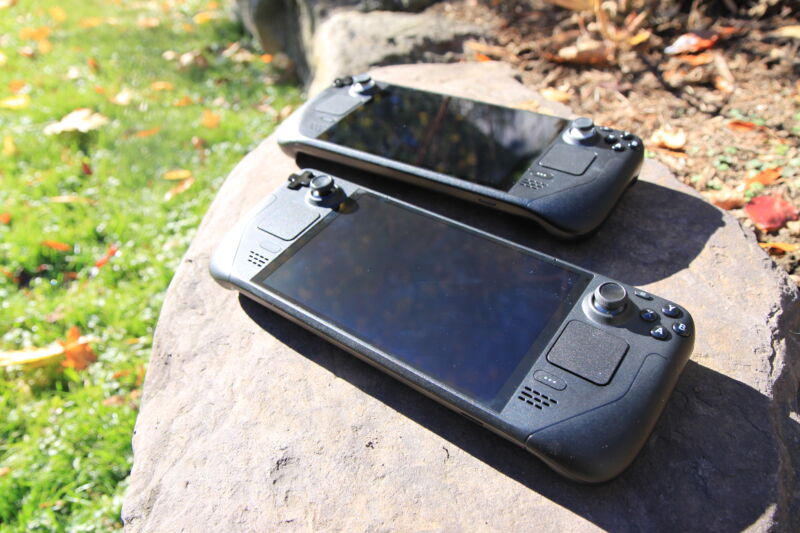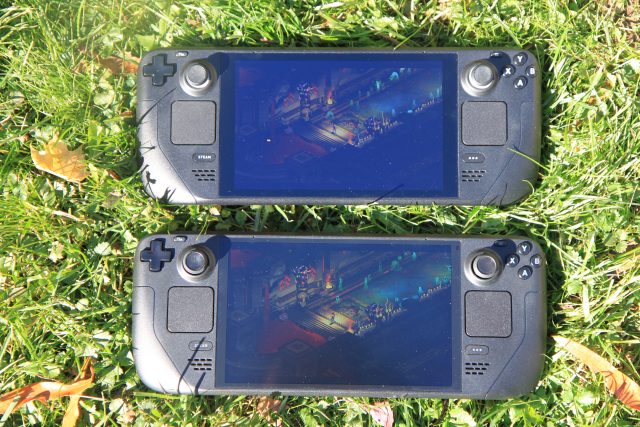
When the Steam Deck first launched, our extensive review specifically called out the “ho-hum” LCD screen as “the system’s biggest heartbreak.” The “washed-out” color reproduction and “obvious light bleed” were among the more obvious effects of Valve “cut[ting] corners to save cash” on the Deck’s 7-inch LCD panel.
In the many months since that launch, Valve has offered frequent software updates to fix other early issues in areas like game compatibility, stability, and system-level features. But that lackluster LCD screen has remained the Steam Deck’s biggest flaw, a headache that users need to tolerate to enjoy a portable PC gaming experience that’s otherwise quite low on compromises.
With the Steam Deck OLED, Valve is ready to eliminate that issue. The new unit, which goes on sale later this week, sports a brilliant screen that’s finally on par with the one Nintendo provided to eager Switch owners over two years ago. Paired with a handful of other small quality-of-life hardware upgrades, the new version of Valve’s handheld should arouse plenty of jealousy in those stuck with a now-outdated LCD unit.

As nice as those upgrades are, though, they don’t touch the Steam Deck’s core pixel-pushing specs, which are already starting to look a bit dated in the shadow of upstart competitors with beefier chips. Whether those quickly aging internals are enough to last until the planned launch of a true “Steam Deck 2.0” in a few years depends largely on what kinds of games you expect to play on the handheld.
Bright and smooth
We’ve been touting the benefits of OLED vs. standard LCD screens here at Ars since at least 2016, so the major improvements in the Steam Deck OLED are pretty familiar by now. Deeper blacks, better contrast, brighter colors, less blurring—it’s all here.
If anything, the OLED improvements are even more impressive because of just how lousy the screen was on the original Steam Deck. When the Nintendo Switch introduced an OLED model in 2021, we deemed the upgrade “nonessential,” in large part because the original Switch screen was already pretty decent. Jumping from the Steam Deck to the Steam Deck OLED, on the other hand, is akin to moving from a view through frosted glass to a view through expertly tailored prescription glasses.

Kyle Orland
The visual pop is most apparent in games designed to make full use of the HDR color gamut. By now, gamers with decent TVs or monitors are very familiar with the impact of, say, a brilliant HDR sunrise shining through the skyscrapers in a game like Spider-Man: Miles Morales. And while smartphone gamers have been enjoying this kind of effect on select games for a while now, there’s still a certain wow factor to seeing these colors on the relatively large screen of a dedicated gaming handheld.

